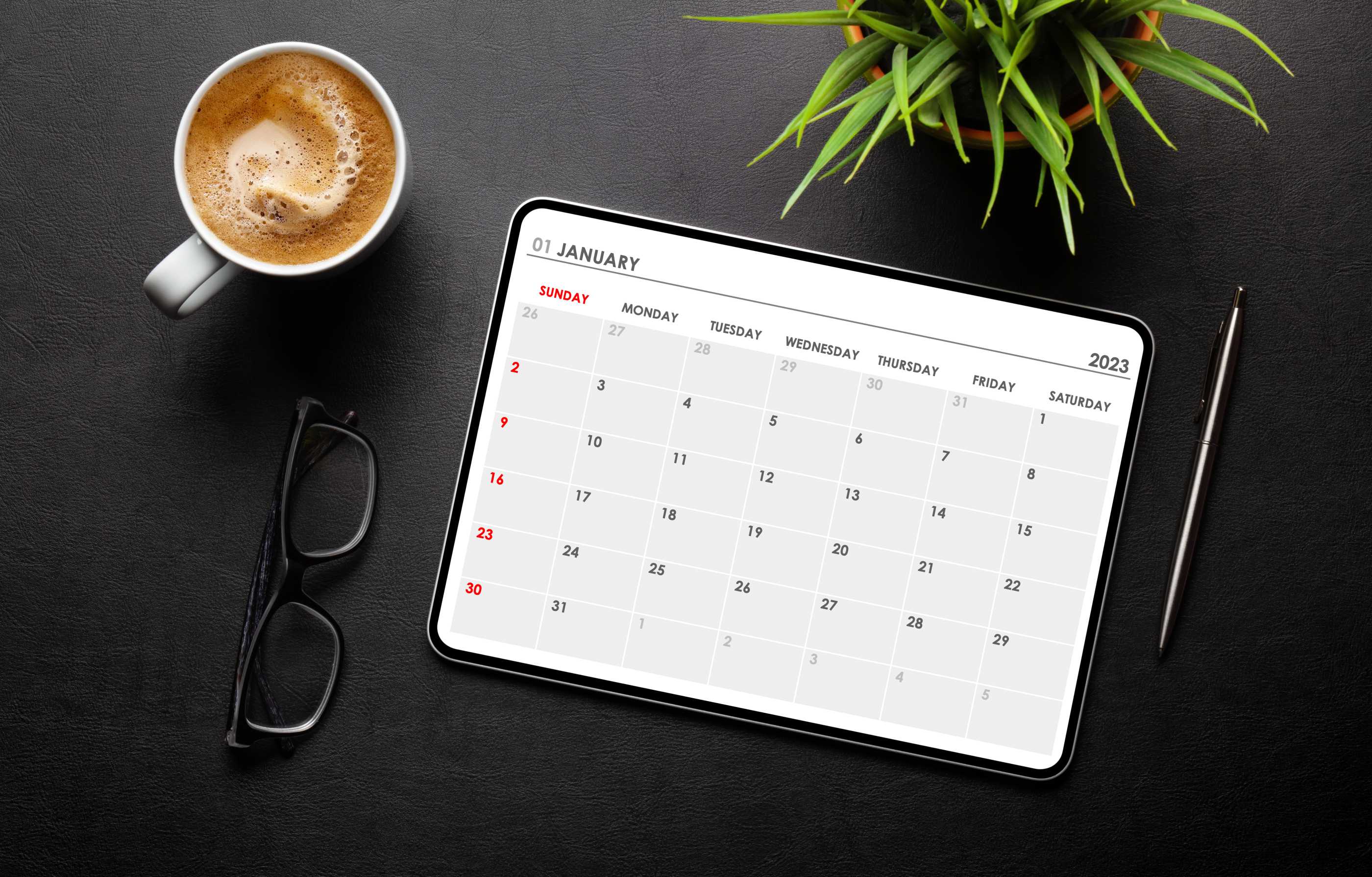What are the best digital calendar applications?
22nd August 2025
Time to get organised: improve your productivity with these useful applications.
Are you very busy? Struggling to juggle work and home obligations? Always forgetting meetings or missing deadlines? It sounds like you could use a calendar or planner to help you to keep things organised.
With an online planner you can schedule meetings and events, set reminders and integrate other programs, all to make it easier for you to keep track of your workload. Getting more organised will increase your effectiveness and output: but which one should you use?
We have 4 options for you, but we haven’t ranked them as the right one for you will heavily depend on what you need. Instead, we’ve explained how each of them can help you to allow you to come to an informed decision on which is best for you:
Calendar.com: great for scheduling meetings, Calendar.com allows you to send booking links, which is ideal if you’re a business that includes appointments. With an analytics dashboard, AI-powered suggestions, as well as integrations with Zoom, Stripe and Zapier, Calendar.com is a great choice to help you get organised.
However, it doesn’t have to same level of integration capabilities as some of the other options on our list, and it may not be used by so many people, reducing the ability to collaborate between calendars. There is a free plan, but to get all the features you could be paying up to £9.50 a month.
Fantastical: the calendar option from Apple, Fantastical is know for having a stunning interface that is powerful, but also easy to use. With natural language input, weather and time zone integration, task reminders and support, as well as compatibility with Apple products, Fantastical has a lot to offer.
This may be the greatest drawback though: it is for macOS or iOS only, even though it syncs with Google and Exchange. Additionally, some of the premium features are behind a paywall (£4.99 a month or £39.99 a year). If you’re an Apple user, this calendar is an excellent choice; if not, it seems unwise to change your entire infrastructure for the sake of a calendar.
Google Calendar: with seamless integration into Google products like Gmail, Meet and Drive, Google Calendar is known for being simple to use. It has shared calendars and event collaboration, task and reminder integration, multi-device sync and smart suggestions, making it a powerful and intuitive tool.
While it is free and widely accessible with a clean interface, Google Calendars does have some drawbacks. Customisation options are limited, and it lacks advanced project management tools, which may make it the wrong choice for some users. Despite this, it is free with a Google account (£6 per user per month from Google Workspace) so definitely worth trying for yourself.
Microsoft Outlook Calendar: for Microsoft 365 users, this is the obvious choice – this calendar is ideal for businesses, with strong security and compliance features to keep your systems secure. Everything is linked to your emails, making it easier to schedule and work collaboratively.
Integration with Microsoft apps like Teams and OneDrive, shared calendars and scheduling with other users, time zone support and availability tracking, as well as task and contact integration make Microsoft Outlook Calendar a great choice. The downside is that if you don’t have Microsoft 365 you lose out on some of the best features. Furthermore, the interface can feel more cluttered and clunky than some of our other options.
So, which calendar is best? It entirely depends on what you want: how people stay organised is a different experience for each person. If you need something with a lot of capabilities and integrations then Microsoft or Google have options you might like; if you’d rather something more simple and visually pleasing, Apple or Calendar.com may serve you better.
If you’d like any more help selecting a calendar, please contact Interfuture Systems.
YouTube: https://youtu.be/mKMoPIBuYjY

